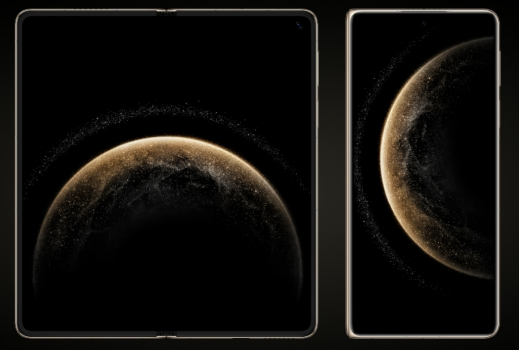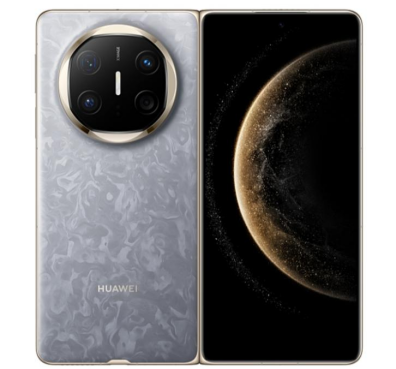Foldable phones have revolutionized how technology and usability converge in modern devices. With the ability to transform from a standard smartphone into a larger screen tablet, foldable phones offer unique functionalities that go beyond the traditional smartphone experience. From enhanced multitasking to creative uses in digital art, these innovative devices are opening doors to new opportunities. Let’s delve into how foldable phones are reshaping our digital interactions and the various exciting use cases they bring to the table.

One of the leading attractions of foldable phones is their multitasking capabilities. The larger, flexible screen allows users to run multiple applications simultaneously, enhancing productivity and convenience. Imagine writing an email while referencing a document, browsing the web, or even attending a video call, all on the same expansive display.
The split-screen functionality on foldable phones enables seamless transitions and interactions between different tasks. For instance, you can drag and drop images or text from one screen section to another, making it simpler to compile information from various sources. This merges the realms of smartphones and tablets, creating an all-in-one device that caters to diverse needs.
Enhanced multitasking not only aids in professional tasks but also significantly improves users' daily interactions with their devices. By eliminating the need to switch between apps, foldable phones save time and streamline processes, making them an ideal choice for users who demand efficiency and versatility in their mobile devices.
Gaming is another area where foldable phones truly excel. The larger screen size offers an immersive gaming experience, comparable to tablets but within a more flexible form factor. Gamers can enjoy detailed graphics and expansive gameplay, which would be difficult to achieve on traditional smartphones.
Foldable phones enhance touchscreen control, providing a broader and more intuitive interface for gaming. Many games optimize for larger displays, ensuring that users get the best possible experience. Plus, the additional screen space allows for on-screen controls that do not clutter the gameplay, making it easier to manage in-game actions.
Furthermore, the powerful hardware found in most foldable phones ensures they can handle resource-intensive games. Coupled with an excellent display and often superior sound systems, foldable phones can turn gaming into a highly engaging activity. As developers continue to innovate, foldable phones may well become the go-to devices for serious mobile gamers.
Foldable phones are perfect for boosting productivity and office work efficiency. The ample screen space is ideal for creating documents, managing emails, and conducting research, all from one device. They offer the convenience of a mobile phone with the capabilities often reserved for larger machines such as laptops or desktops. Professionals can benefit from the ability to split the screen between different tools, such as a word processor on one side and a note-taking app on the other.
This setup mimics dual-monitor configurations typically seen in traditional office environments, enhancing productivity and workflow. Additionally, many office-related apps are being optimized specifically for foldable screens, ensuring smooth operation and utilization of available space. Remote work also benefits greatly from foldable phones. Video conferencing becomes more manageable with the extra display space, and taking notes or referring to documents during meetings is seamless. These devices encapsulate the essence of on-the-go productivity, making them invaluable in the current digital workspace.
Foldable phones are proving to be powerful tools for creatives, particularly in the fields of digital art and design. The ability to expand the screen allows artists and designers to work with intricate details and larger canvases than a typical smartphone. Digital artists can sketch, draw, and paint directly onto the device using stylus support, if available. The flexibility of a foldable phone means it can act as both a notebook and a canvas, adapting to the needs of the user.
Moreover, the high-resolution displays offer precise color accuracy and vibrancy, crucial for design work. Designers can also utilize multiple apps simultaneously, which can be a significant boon for workflows involving photo editing, layout designing, or 3D modeling. By bridging the gap between smartphones and tablets, foldable phones offer a versatile tool that suits the dynamic requirements of the creative industry.

For media consumption and entertainment, foldable phones deliver a superior experience. The increased screen real estate means watching movies, TV shows, and videos can be more enjoyable, providing a near-tablet experience with the convenience of a phone. Reading books, magazines, and articles is also more pleasant on a larger display, reducing the strain on the eyes and making the text more legible. Additionally, foldable phones' multi-window capabilities mean users can take notes or browse other content without interrupting their viewing experience.
Music and podcast lovers benefit from foldable phones' enhanced audio features, often paired with high-quality speakers that ensure a rich, immersive sound. Overall, the combination of visual and auditory enhancements makes foldable phones ideal for a comprehensive media consumption experience.
With the advent of foldable phones, app developers are pushed to think creatively and innovate new features tailored to this unique form factor. Applications need to be designed to seamlessly adjust and transform based on the device’s mode, whether it’s folded or unfolded. This has led to the creation of apps that offer more dynamic interfaces and functionalities. For instance, a navigation app can provide a larger map view when unfolded while displaying additional details or controls when folded.
This adaptability enhances the user experience, making everyday tasks more intuitive and engaging. Developers are also exploring new multi-tasking and split-screen app features, improving usability and paving the way for smarter, more efficient mobile applications. This innovation in app development not only brings better functionality to our devices but also enhances the way we interact with technology daily.
Moreover, if you're considering upgrading to a foldable phone, you might want to explore the latest options available in the market. For instance, the new folding smart phone from Huawei offers cutting-edge technology and user-friendly features that are sure to enhance your mobile experience. With the variety of styles and features available, there's a foldable phone to suit every need and preference.
Foldable phones are reshaping the landscape of mobile technology, offering unique functionalities that bridge the gap between smartphones and tablets. Their enhanced multitasking, superior gaming experiences, increased productivity, creative uses, and enriched media consumption present a compelling case for their widespread adoption. As developers continue to innovate, the future of foldable phones looks promising, with the potential to revolutionize the way we interact with our devices.
Foldable phones offer larger screens for improved multitasking, immersive gaming, enhanced media consumption, and creative uses like digital art. They also drive innovative app development tailored to their unique form factor.
Foldable phones enhance productivity through their split-screen capabilities, allowing users to run and interact with multiple apps simultaneously. They provide an all-in-one device for office work, drafting, video conferencing, and more.
While foldable phones offer numerous advantages, they are typically more expensive than traditional smartphones. They may also be bulkier and their flexible screens can be more prone to damage. However, advancements in technology continue to address these concerns.
Copyright © 2023 infomorespace.com. All rights reserved.